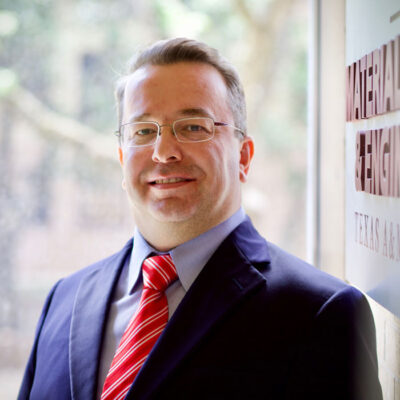Contact
Biography
Ibrahim Karaman’s main research interests are the following: • Deformation and annealing twinning induced grain boundary engineering in ultrafine grain and nanostructured materials including shape memory alloys and low stacking fault energy, high strength steels. • Development and characterization of magnetic shape memory alloys with high actuation force. Bridging length scales in deforming single and textured polycrystals of structural magnetic shape memory alloys. • Novel processing and thermomechanical treatment of high-temperature shape memory alloys (HTSMAs) for obtaining nanostructured HTSMA actuators with excellent cyclic stability, fatigue and creep resistances. • Development of undergraduate curriculum for “Nanoscale Issues in Manufacturing”. • Fabrication of bulk metallic glasses (BMGs) and bulk metallic glass matrix composites via powder consolidation using equal channel angular extrusion for kinetic energy penetrators. • Fabrication and deformation studies of bulk nanocrystalline materials. • Development of a MagnetoThermoMechanical (MTM) testing system for characterization of magnetic shape memory alloys. His team mainly focuses on materials that demonstrate at least two of the following mechanisms: dislocation slip, martensitic transformation, and deformation twinning. One example is his discovery of new smart materials that have the potential to significantly improve the efficiency of fuel burn in jet engines, cutting the cost of flying. The materials, which could also reduce airplane noise over residential areas, have additional applications in a variety of other industries. The discovery is based on bringing together two relatively new areas of materials science involving metal alloys, or metals composed of two or more elements. The first area involves shape-memory alloys, “smart” materials that can switch from one shape to another with specific triggers, in this case temperature. Picture a straight metal rod that is bent into a corkscrew. By changing the temperature, the corkscrew turns back into a rod and vice versa. He is the Chevron Professor and head of the Department of Materials Science and Engineering at Texas A&M. He earned a BS and MS in mechanical engineering from Bogazici University in Turkey and a PhD in mechanical engineering from the University of Illinois, Urbana-Champaign.
